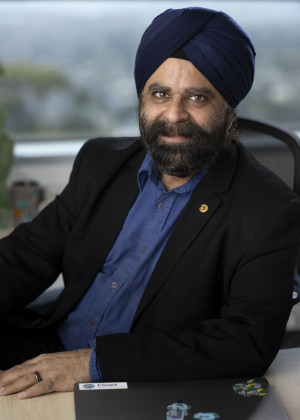Governance
The U.S. Department of Energy established this Agency Priority Goal for fiscal years 2024-25: "Building on the Integrated Research Infrastructure (IRI) report published in 2023, the National Laboratories will work with the Office of Science to establish the IRI program governance, steering model and membership to accelerate progress towards high priority integrated science goals."
DOE’s Office of Science is the lead for establishing and organizing the IRI program for DOE. Consistent with DOE’s famed national laboratory management model, the IRI program governance has this structure:
- Federal management and oversight involving ASCR, the Science Programs, and the Office of the Deputy Director for Science Programs.
- Management Council organizes and implements the technical and engagement efforts in the field.
- User groups will provide structured forums for future IRI resource providers and IRI science teams.
IRI Management Council
In FY 2024, the Office of Science directed the ASCR Facilities to stand up the Management Council, which will expand to include broader participation in FY 2025.
Management Council Executive Committee
The Management Council’s Executive Committee provides institutional executive oversight of IRI efforts in the field. The Executive Committee is initially composed of the directors of the ASCR Facilities. The Executive Committee’s primary responsibilities working with the Office of Science federal leaders and program officers to align the program goals objectives with resources. are clear, achievable, and aligned with IRI goals and facility missions and goals.
The Management Council’s Executive Committee will prioritize strategies and allocate both human and technical resources to achieve program objectives efficiently, subject to DOE approval where required. The Council will maintain program oversight through annual reviews conducted with the DOE SC IRI Steering Committee, assessing progress and adjusting strategies as needed. Additionally, the Council will manage potential risks and challenges while ensuring clear communication and coordination between the IRI management council, stakeholders, and other relevant parties.
Management Council: Leadership Group
The Management Council’s Leadership Group is a conduit for communication of objectives and progress: it communicates with the leads of the technical and engagement/outreach subcommittees and also reports into the IRI Executive committee.
Management Council: Technical Subcommittees
Currently, the Management Council’s Leadership Group is actively establishing and organizing its Technical Subcommittee to provide specialized guidance and oversight for the program's technical initiatives.
Outreach and Engagement
The role of the Outreach/Engagement Technical subcommittee is to coordinate work being done with the pathfinder science teams, identify common requirements and communicate to the Leadership team. This subcommittee is also responsible for broader community engagement, working with science teams who wish to engage more closely with IRI and bringing them into the IRI framework.
Over time, the set of active IRI projects will expand as resources become available. The list of initial Pathfinder projects is an initial list of projects, not a complete list of projects - facilities and programs that have an interest in working in this space should work with the Engagement subcommittee on establishing collaboration contact points, readiness levels, requirements, and so forth.
Learn MoreInterfaces
This IRI Interfaces Technical Subcommittee works to gather requirements, define use cases, and specify unified interfaces for the DOE ASCR Facilities. Beyond defining Application Programmable Interfaces (API), this may include the integration of front end applications (e.g. jupyter notebooks) and orchestration systems (including hosted orchestration tools).
This group is tasked with enhancing the “user experience” for interaction and management of complex workflows across High-Performance Computing Facilities, High-Performance Data Facilities, and High-Performance Scientific Network Facilities, thereby facilitating a more cohesive and efficient research infrastructure. The group will consider applicable standards and build upon the work of other organizations where available to deliver a reference IRI interface implementation.
Learn MoreTrusted IRI Designs (TRUSTID)
The Integrated Research Infrastructure (IRI) TRUSTID Technical Subcommittee is established to enable trustworthy and performant execution of cross facility workflows. The TRUSTID subcommittee’s mission is to create a set of design patterns and policy elements that mitigate risks, safeguard assets, and enable a trusted environment for transformative open science.
Cybersecurity enables open science when security architectures and technologies are effectively integrated into performant and functional workflow designs from the beginning. It is essential that security teams and other stakeholders of all sites and facilities engaged in IRI build partnerships to develop trusted multi-facility workflows that are acceptable to all IRI participants. It is an explicit goal of the IRI TRUSTID Technical Subcommittee to create the design patterns and collaborative relationships to bring this about.
Learn More













